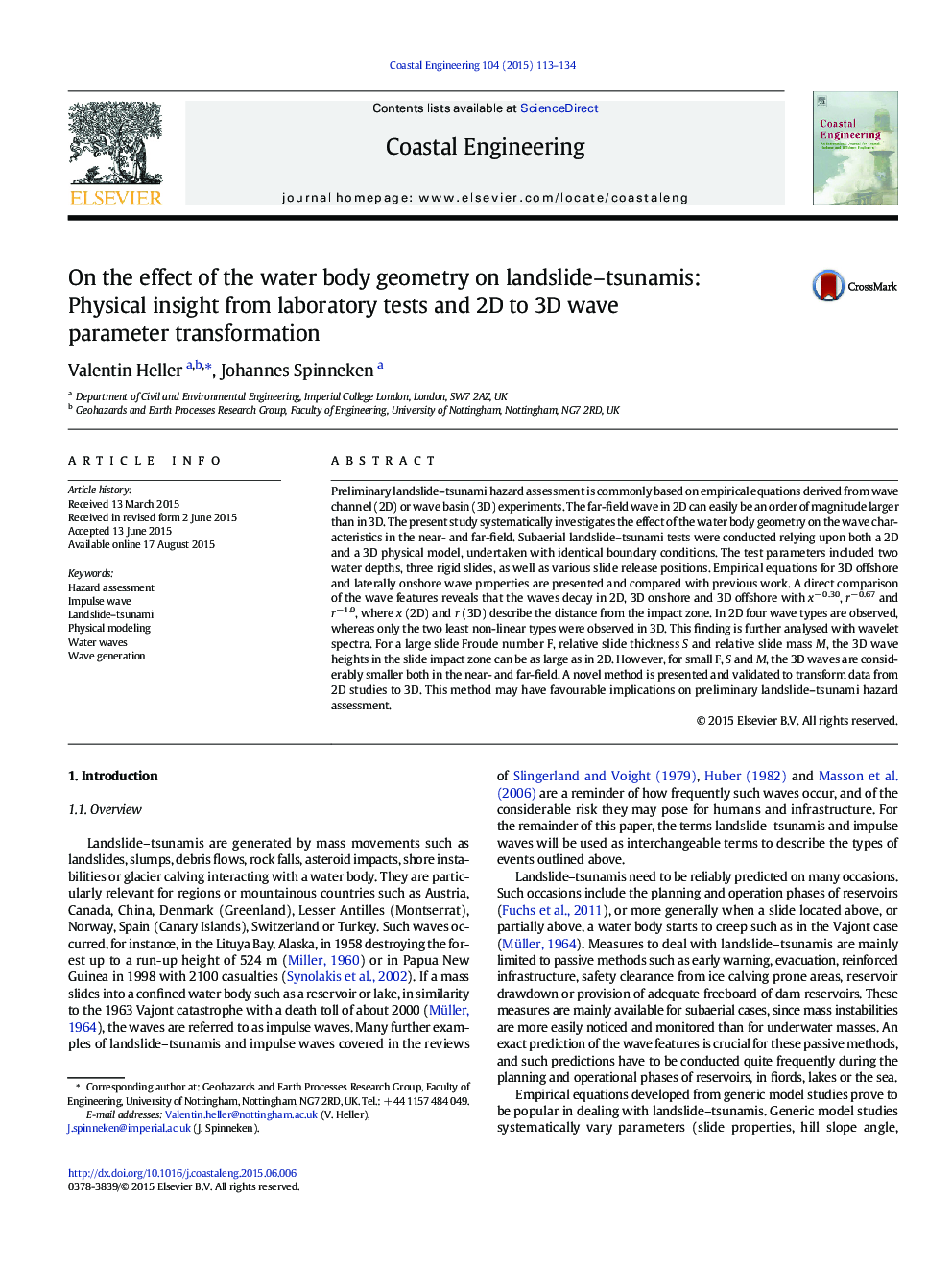| Article ID | Journal | Published Year | Pages | File Type |
|---|---|---|---|---|
| 1720613 | Coastal Engineering | 2015 | 22 Pages |
•Flume (2D) and basin (3D) off- and onshore subaerial landslide–tsunamis are investigated.•Tsunamis in 3D can be as large as in 2D, although they are generally much smaller.•A 2D to 3D wave parameter transformation method is introduced and validated.
Preliminary landslide–tsunami hazard assessment is commonly based on empirical equations derived from wave channel (2D) or wave basin (3D) experiments. The far-field wave in 2D can easily be an order of magnitude larger than in 3D. The present study systematically investigates the effect of the water body geometry on the wave characteristics in the near- and far-field. Subaerial landslide–tsunami tests were conducted relying upon both a 2D and a 3D physical model, undertaken with identical boundary conditions. The test parameters included two water depths, three rigid slides, as well as various slide release positions. Empirical equations for 3D offshore and laterally onshore wave properties are presented and compared with previous work. A direct comparison of the wave features reveals that the waves decay in 2D, 3D onshore and 3D offshore with x− 0.30, r− 0.67 and r− 1.0, where x (2D) and r (3D) describe the distance from the impact zone. In 2D four wave types are observed, whereas only the two least non-linear types were observed in 3D. This finding is further analysed with wavelet spectra. For a large slide Froude number F, relative slide thickness S and relative slide mass M, the 3D wave heights in the slide impact zone can be as large as in 2D. However, for small F, S and M, the 3D waves are considerably smaller both in the near- and far-field. A novel method is presented and validated to transform data from 2D studies to 3D. This method may have favourable implications on preliminary landslide–tsunami hazard assessment.
